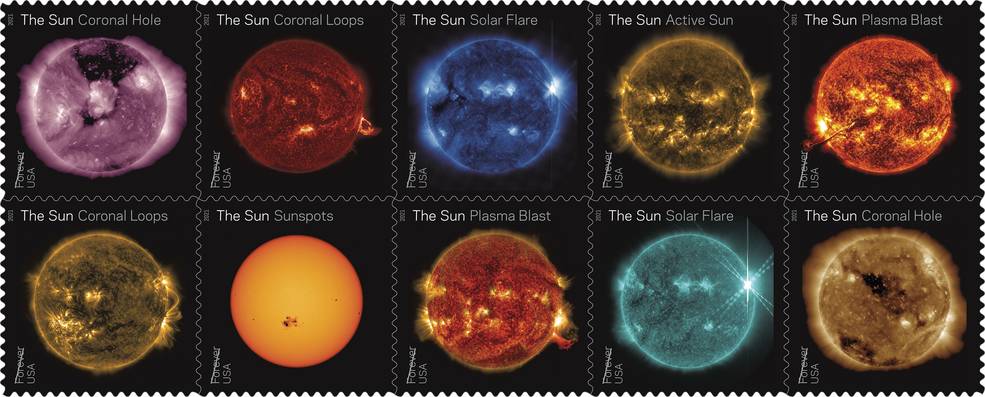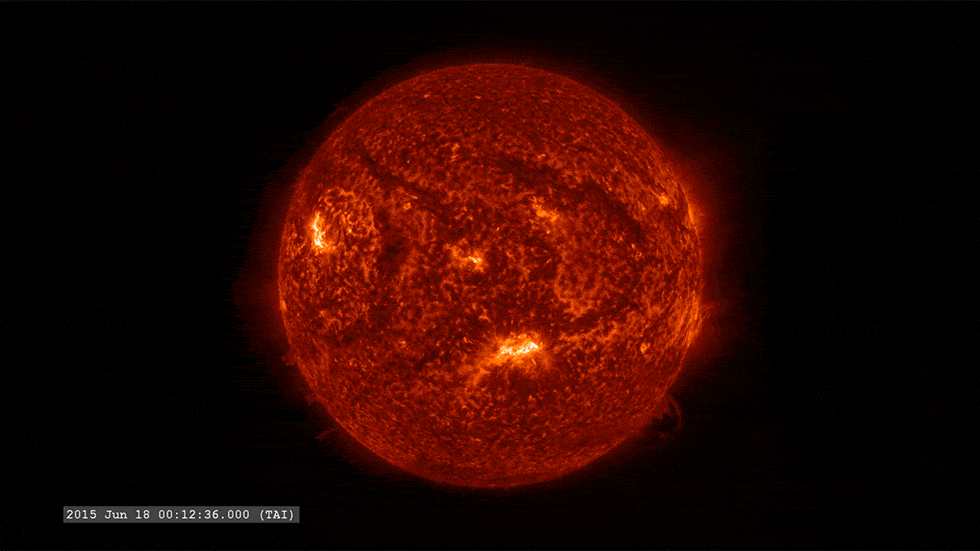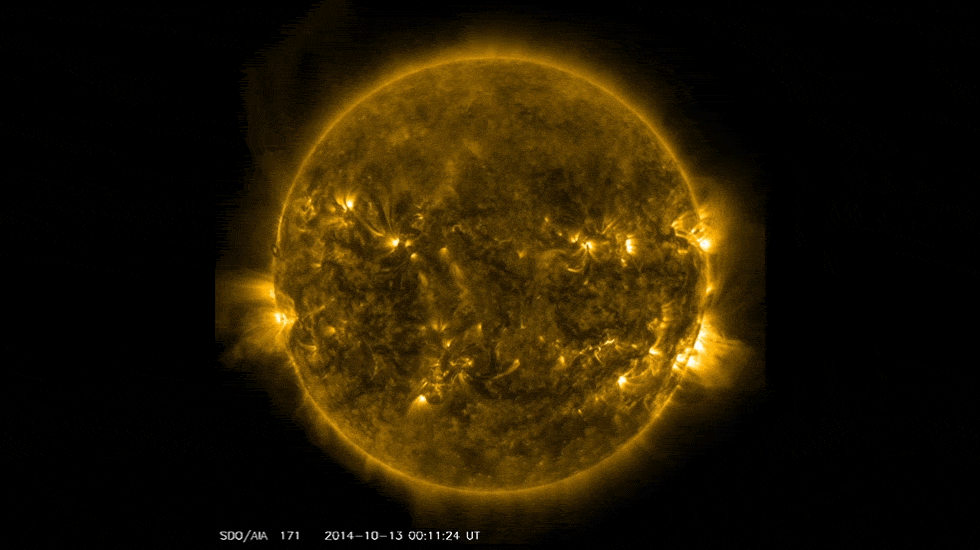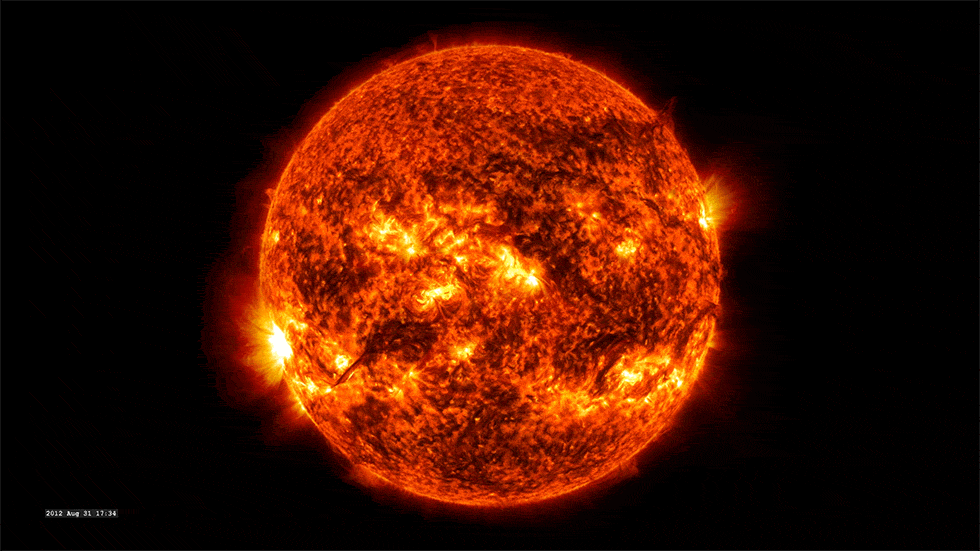What are you looking for?
Search
Description:
"It's such a joy to see these gorgeous postage stamps," said Dr. Nicky Fox, director of NASA's Heliophysics Division at NASA Headquarters in Washington, D.C. I'm reminded of how they help us learn more about how the sun and its changing atmosphere affect Earth and the planet. I'm excited that the Postal Service will be sharing these images with the nation."

SDO's long-term data record is particularly useful for studying the sun's normal activity cycle, which oscillates between high and low activity about every 11 years. At cycle highs, solar activity such as solar flares and coronal mass ejections -- which can affect technology on Earth and in space -- are more common. Although scientists' understanding of this cycle has improved over the past few decades and centuries, the SDO data are helping to reveal more details.
"If we want to understand what makes the sun go round, we need to have this long-term record," said Dr. Mark Cheung, principal investigator of the SDO Atmospheric Imaging Component at Lockheed Martin Solar and Astrophysics Laboratory in Palo Alto, California. "We can track all those magnetic fields and sunspots moving around and how they go into the next solar cycle -- it's in the early days."
Coronal hole

The dark region covering the sun's north polar region is a coronal hole, an open region of the sun's magnetic field from which the high-velocity solar wind escapes into space. When this high-velocity solar wind collides with our planet's magnetic field, they can trigger spectacular auroras here on Earth. These images were taken between May 17-19, 2016, and the image on the stamp was taken on May 17. The image shows the Sun at 211 Angstrom light, a wavelength of extreme ultraviolet light. This light is invisible to our eyes and is absorbed by the Earth's atmosphere, so it can only be seen by instruments in space.
crown ring

Visible to the lower right of the Sun is a prominence, its bright arcs traced by charged particles circling along the Sun's magnetic field lines. Coronal loops often appear above sunspots and active regions, regions of strong and complex magnetic fields on the sun. These images were taken on June 18, 2015 at 304 Angstroms, an extreme ultraviolet wavelength.
flare

The bright flash above and to the right of the Sun is a powerful X-class solar flare. X-class flares are the most powerful type of solar flare, and these bursts of light and energy can disrupt the part of Earth's atmosphere where GPS and radio signals travel. These images were taken on August 9, 2011 at an extreme ultraviolet wavelength of 335 angstroms.
active sun

The view highlights the many active regions scattered across the Sun's surface. Active regions are regions of the sun with strong and complex magnetic fields -- associated with sunspots -- prone to solar flares or explosions of material called coronal mass ejections. The image was taken on October 8, 2014 at an extreme ultraviolet wavelength of 171 angstroms.
plasma shock wave

Coronal hole

The dark region covering the sun's north polar region is a coronal hole, an open region of the sun's magnetic field from which the high-velocity solar wind escapes into space. When this high-velocity solar wind collides with our planet's magnetic field, they can trigger spectacular auroras here on Earth. These images were taken between May 17-19, 2016, and the image on the stamp was taken on May 17. The image shows the Sun at 211 Angstrom light, a wavelength of extreme ultraviolet light. This light is invisible to our eyes and is absorbed by the Earth's atmosphere, so it can only be seen by instruments in space.
crown ring

Visible to the lower right of the Sun is a prominence, its bright arcs traced by charged particles circling along the Sun's magnetic field lines. Coronal loops often appear above sunspots and active regions, regions of strong and complex magnetic fields on the sun. These images were taken on June 18, 2015 at 304 Angstroms, an extreme ultraviolet wavelength.
flare

The bright flash above and to the right of the Sun is a powerful X-class solar flare. X-class flares are the most powerful type of solar flare, and these bursts of light and energy can disrupt the part of Earth's atmosphere where GPS and radio signals travel. These images were taken on August 9, 2011 at an extreme ultraviolet wavelength of 335 angstroms.
active sun

The view highlights the many active regions scattered across the Sun's surface. Active regions are regions of the sun with strong and complex magnetic fields -- associated with sunspots -- prone to solar flares or explosions of material called coronal mass ejections. The image was taken on October 8, 2014 at an extreme ultraviolet wavelength of 171 angstroms.
plasma shock wave












